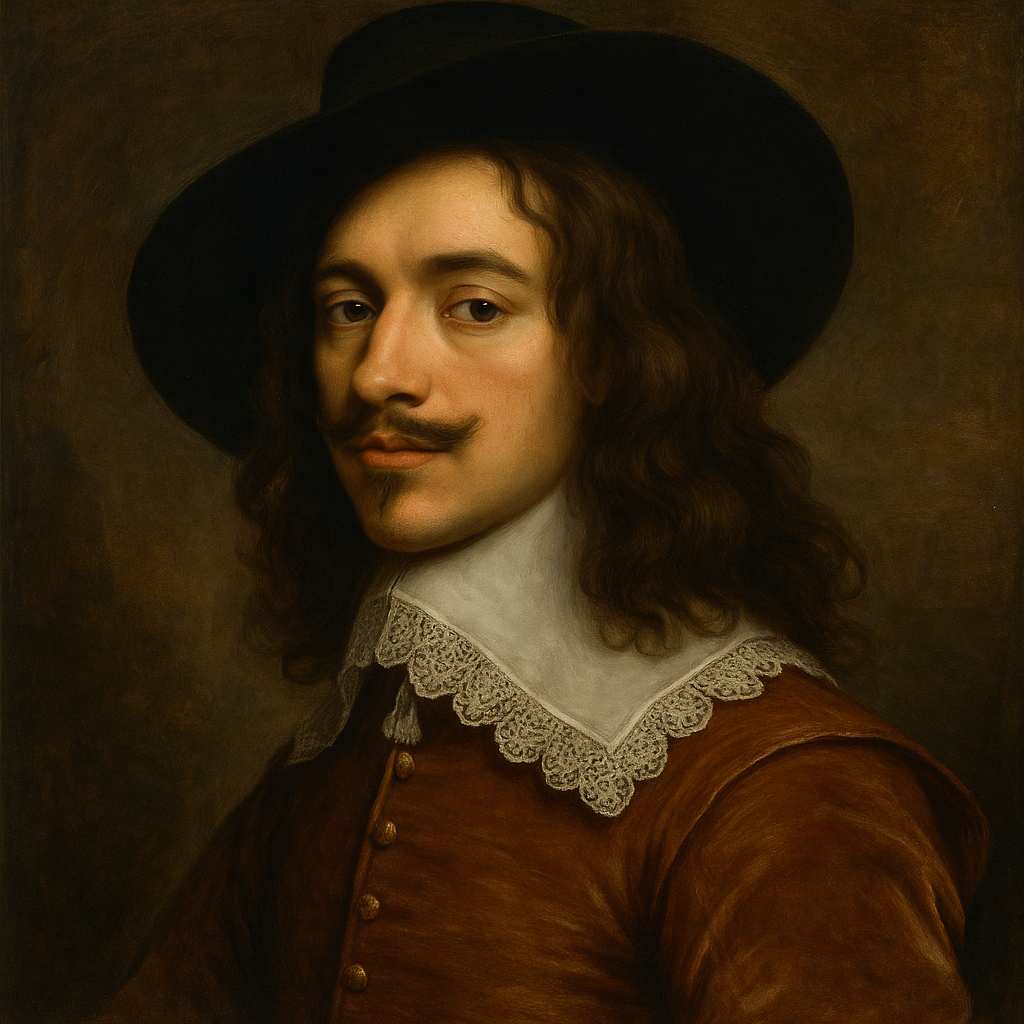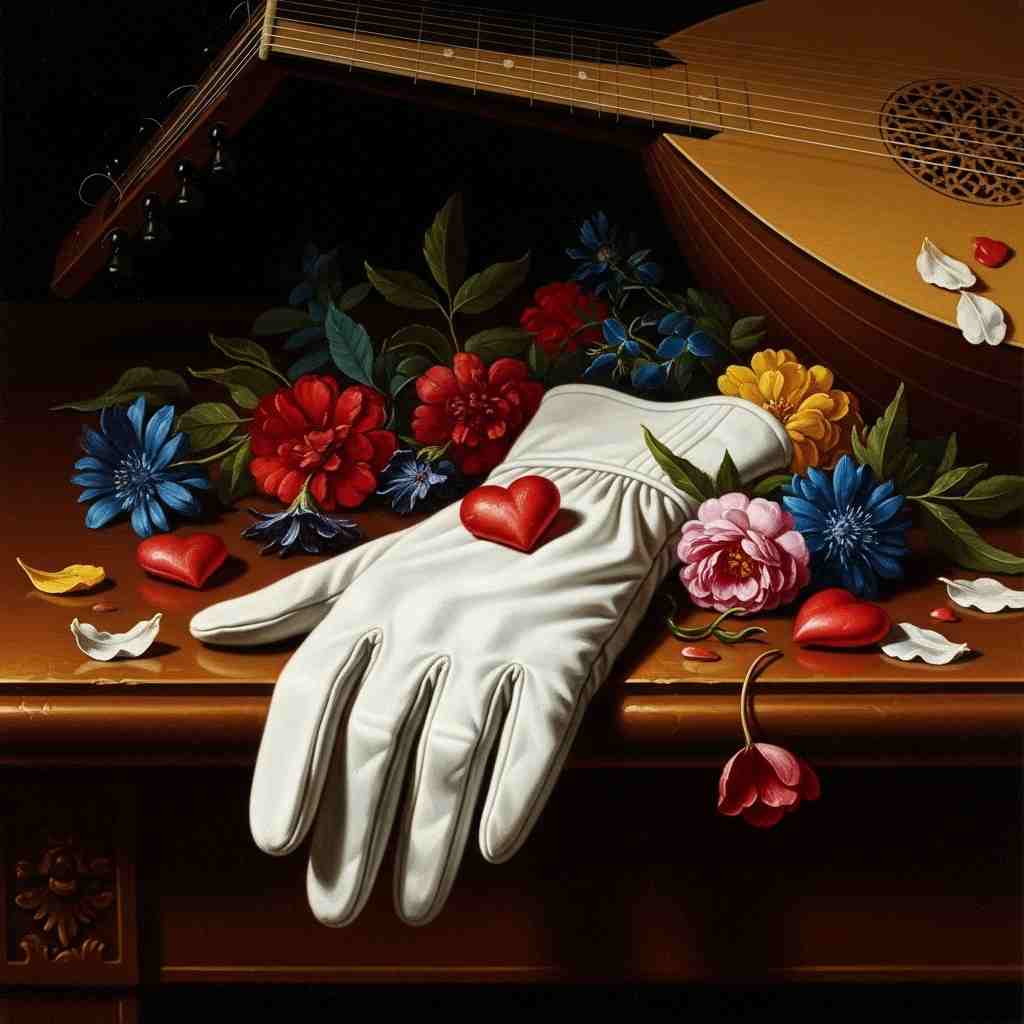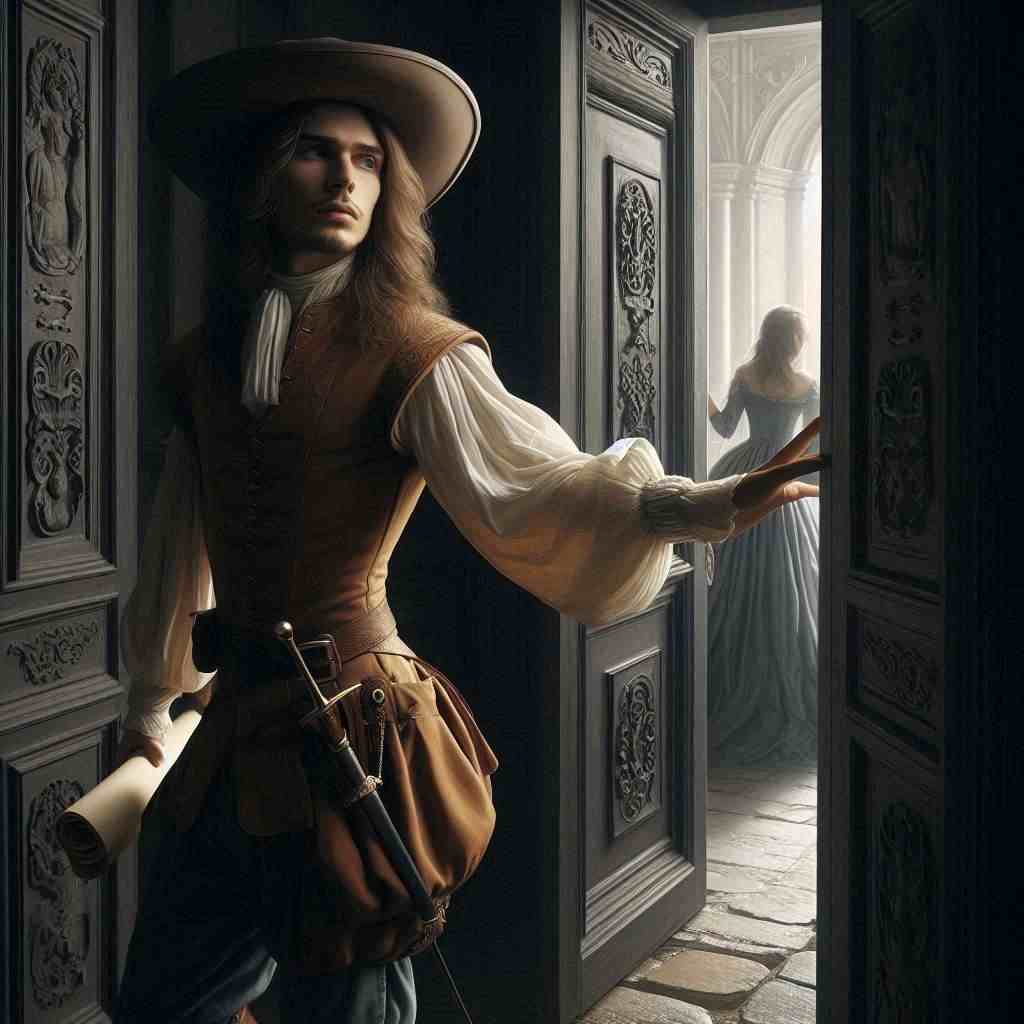3 Poems by Richard Lovelace
1617 - 1657
Richard Lovelace Biography
Richard Lovelace, born in 1617 to Sir William Lovelace and Anne Barne, was a distinguished Cavalier poet of the English Civil War era whose life and works epitomized the ideals of courtly love and unwavering loyalty to the Crown. Hailing from a wealthy Kentish family with a strong military tradition, Lovelace's upbringing was steeped in the chivalric values that would later define his poetry and personal conduct.
Educated at Charterhouse School and Oxford University, Lovelace demonstrated early promise as a scholar and a poet. His time at Oxford was marked by intellectual curiosity and a growing passion for literature, particularly the works of classical authors and contemporary metaphysical poets. It was during this period that Lovelace began to hone his poetic skills, crafting verses that would later establish him as one of the foremost Cavalier poets of his generation.
Upon completing his studies, Lovelace embarked on a brief but significant military career, serving in the Bishop's Wars in Scotland and later as a senior ensign in Lord Goring's regiment during the Second Battle of Breda. These experiences would profoundly influence his poetry, infusing his verses with themes of honor, duty, and the complexities of love in times of conflict.
Lovelace's loyalty to King Charles I was unwavering, a commitment that would shape both his personal life and his literary output. In 1642, he presented a petition to the House of Commons advocating for the restoration of the bishops to Parliament and the return of the king's military power. This act of political defiance led to his first imprisonment in the Gatehouse Prison, where he penned one of his most famous poems, "To Althea, from Prison."
The poem's immortal lines, "Stone walls do not a prison make, / Nor iron bars a cage," encapsulate Lovelace's defiant spirit and his belief in the transcendent power of love and loyalty. This work, along with "To Lucasta, Going to the Warres," which contains the equally renowned line "I could not love thee, Dear, so much, / Loved I not Honour more," solidified Lovelace's reputation as a poet who could deftly interweave themes of romantic love with political allegiance and personal honor.
Lovelace's poetry is characterized by its elegance, wit, and emotional depth. His verses often explore the tension between public duty and private desire, a conflict that mirrored the tumultuous political landscape of 17th-century England. Unlike some of his contemporaries, Lovelace's work eschews overtly religious themes, focusing instead on secular subjects and the complexities of human relationships.
The poet's personal life was as turbulent as the times in which he lived. His romantic entanglements, particularly his relationships with Lucy Sacheverell (the "Lucasta" of his poems) and Althea (whose identity remains a subject of scholarly debate), provided rich material for his love poetry. These relationships, marked by separation and longing, imbued Lovelace's verses with a poignant sense of absence and desire.
Lovelace's fortunes waned dramatically following the Royalist defeat in the English Civil War. His second imprisonment in 1648, coupled with the loss of his family estates, led to a period of financial hardship and obscurity. Despite these setbacks, Lovelace continued to write, and his collection "Lucasta: Epodes, Odes, Sonnets, Songs, &c." was published in 1649.
The final years of Lovelace's life remain shrouded in mystery and speculation. Some accounts suggest he died in poverty in 1657, while others claim he lived on in reduced circumstances until 1658. Regardless of the exact details of his demise, Lovelace's legacy as a poet has endured far beyond his brief life.
Posthumously, Lovelace's reputation has undergone several reassessments. Initially celebrated as a paragon of Cavalier virtue and poetic skill, his work fell out of favor during the Restoration period. The 19th century saw a revival of interest in Lovelace, with Romantic poets and critics praising his lyrical grace and emotional sincerity.
Modern scholarship has brought renewed attention to Lovelace's oeuvre, exploring the nuances of his political allegiances, his engagement with contemporary poetic traditions, and his innovative use of form and imagery. Critics have noted the musicality of his verses, the deft handling of paradox and antithesis, and the complex interplay between public and private personas in his work.
Lovelace's influence extends beyond his own time, with echoes of his poetry discernible in the works of later writers. His exploration of love, honor, and loyalty continues to resonate with readers, while his life story serves as a compelling example of the intersection between art and politics in 17th-century England.
In the annals of English literature, Richard Lovelace stands as a figure who embodied the ideals of his age while crafting poetry of timeless appeal. His works, born from a life of passion, conflict, and unwavering commitment to his principles, continue to captivate scholars and poetry enthusiasts alike, ensuring his place among the most celebrated poets of the English Renaissance.
This text was generated by AI and is for reference only. Learn more
Username Information
No username is open
Everything is free to use, but donations are always appreciated.
Quick Links
© 2024-2025 R.I.Chalmers (V2Melody).

All music on this site by R.I.Chalmers (V2Melody) is licensed under a Creative Commons Attribution-NonCommercial 4.0 International License.
Attribution Requirement:
When using this music, you must give appropriate credit by including the following statement (or equivalent) wherever the music is used or credited:
"Music by R.I.Chalmers (V2Melody) – https://v2melody.com"
Support My Work:
If you enjoy this music and would like to support future creations, your thanks are always welcome but never required.
Thanks!




